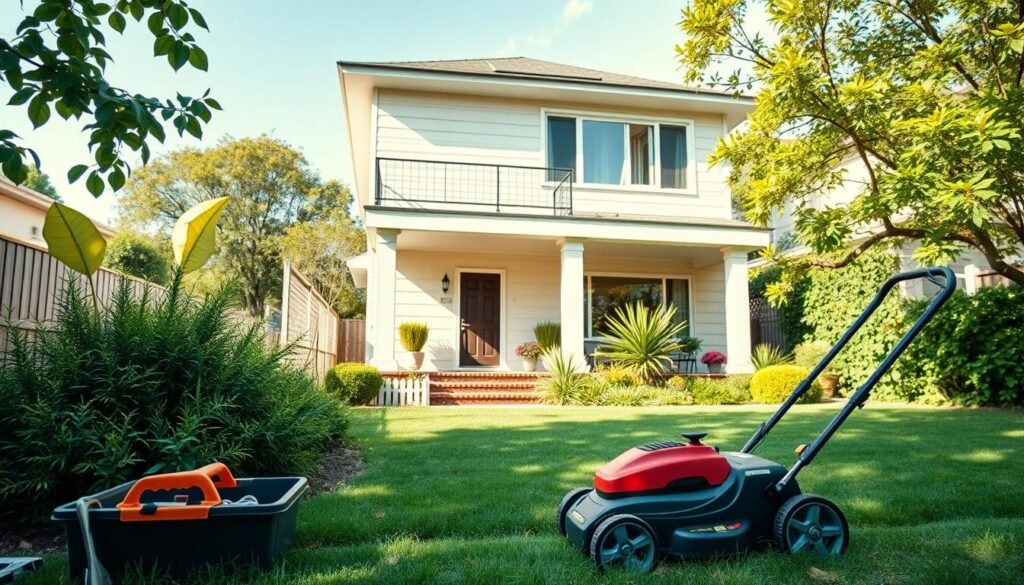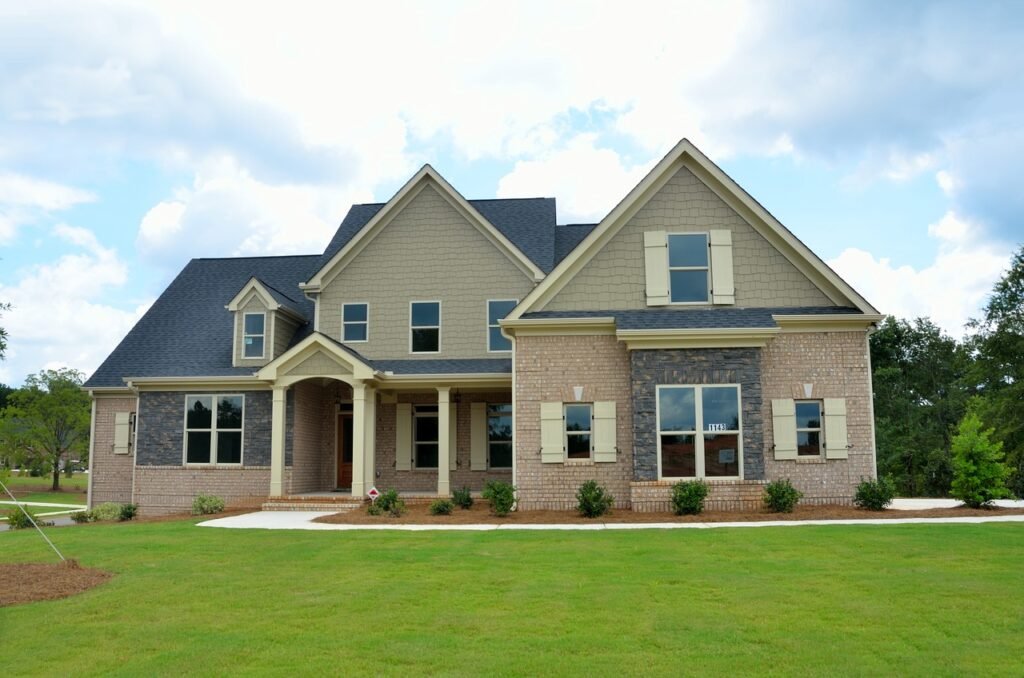Did you know that maintenance costs can account for up to 30% of a rental property’s annual operating expenses? Effective management of these costs is crucial for landlords seeking to maximize their return on investment. This comprehensive guide explores strategies to help you reduce maintenance costs, maintain your property’s value, and keep your tenants satisfied.
Key Takeaways
- Understand the importance of maintenance cost management to your rental property’s financial health
- Implement preventive maintenance strategies to proactively address issues and avoid costly repairs
- Leverage technology and build strong relationships with contractors to streamline maintenance efforts
- Educate tenants on property care and offer incentives to encourage responsible behavior
- Continuously evaluate your maintenance strategies and make adjustments to optimize costs
Understanding the Importance of Maintenance Cost Management
Maintaining a rental property can be a significant expense for property owners, but effective cost management can lead to long-term benefits. Understanding the financial impact of high maintenance costs and the advantages of efficient maintenance practices is crucial for smart property management strategies and rental property maintenance tips.
The Financial Impact of High Maintenance Costs
High maintenance costs can have a substantial impact on a property owner’s bottom line. Unexpected repairs, frequent replacements, and inefficient systems can quickly eat away at rental income, reducing overall profitability. Proactive cost management is essential to ensure that maintenance expenses do not outpace rental revenue, leading to financial strain and potential losses.
Long-Term Benefits of Efficient Maintenance
Investing in efficient maintenance strategies can yield significant long-term benefits for property owners. Regular upkeep and preventive measures can help extend the lifespan of critical systems and appliances, reducing the frequency and cost of major repairs. Additionally, well-maintained properties often command higher rents and experience better tenant retention rates, contributing to improved overall profitability and asset value.
| Benefit | Description |
|---|---|
| Increased Profitability | Efficient maintenance can help reduce expenses and maximize rental income, leading to higher overall profitability. |
| Improved Property Value | Well-maintained properties tend to appreciate in value more than those with deferred or neglected maintenance. |
| Better Tenant Retention | Tenants are more likely to stay in properties that are well-maintained and responsive to their needs. |
By understanding the financial implications of maintenance costs and the long-term benefits of efficient maintenance practices, property owners can develop comprehensive smart property management strategies and implement effective rental property maintenance tips.
“Proper maintenance is not just a cost, but an investment in the long-term value and profitability of your rental property.”
Conducting Regular Property Inspections
Maintaining a rental property requires diligent attention to detail, and regular inspections are an essential component of preventative maintenance for rentals. By conducting scheduled and on-demand inspections, landlords can identify potential issues before they escalate into costly repairs, ensuring the property remains in optimal condition for both tenants and the owner.
Scheduled Inspections vs. On-Demand Inspections
Landlords should implement a comprehensive inspection schedule, alternating between scheduled and on-demand approaches. Scheduled inspections allow for proactive monitoring, where the property is thoroughly examined at set intervals, such as quarterly or semi-annually. On-demand inspections, on the other hand, are triggered by specific events or tenant requests, ensuring timely attention to emerging concerns.
Common Issues to Look for During Inspections
During property inspections, landlords should be on the lookout for a range of potential rental property maintenance tips, including:
- Structural integrity of the building, such as cracks, leaks, or signs of wear and tear
- Functionality of plumbing, electrical, and HVAC systems
- Condition of appliances, fixtures, and furnishings
- Signs of pest infestations or environmental hazards
- Overall cleanliness and maintenance of the property
By proactively addressing these issues through regular inspections, landlords can ensure their rental properties remain in excellent condition, reducing the need for costly repairs and enhancing the overall tenant experience.
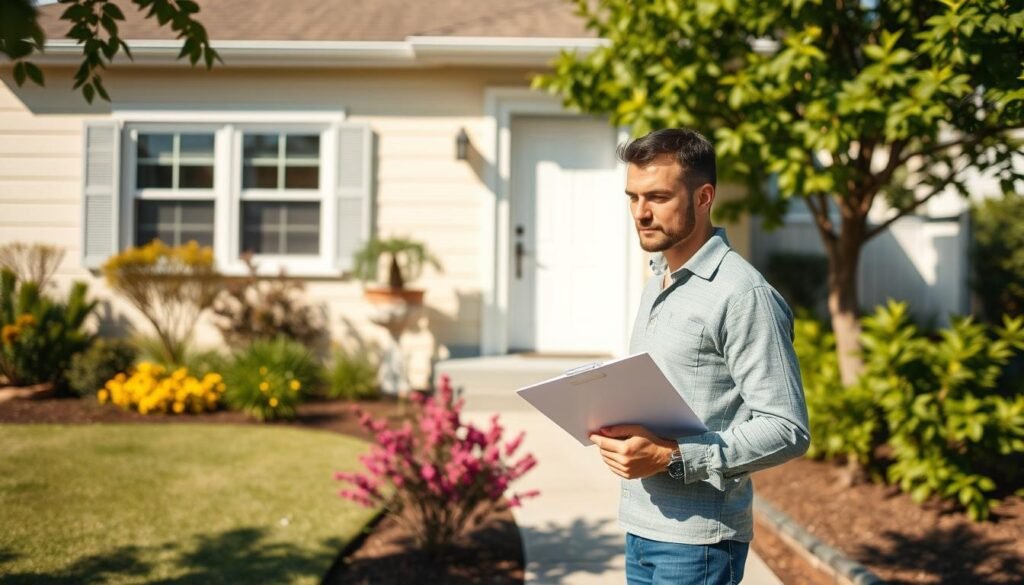
Implementing Preventive Maintenance Strategies
Proactive maintenance is the key to cost-effective rental property upkeep. By implementing preventative maintenance strategies, property owners can lower long-term costs, extend the lifespan of critical systems, and ensure a well-maintained environment for tenants. This approach goes beyond reactive repairs, focusing on identifying and addressing issues before they escalate.
Key Preventive Maintenance Tasks
- Regularly inspect and clean HVAC systems to maintain efficiency and prevent breakdowns
- Inspect and clear gutters and downspouts to prevent water damage
- Regularly check for and address any roof leaks or damaged shingles
- Inspect and service appliances, such as refrigerators, dishwashers, and washing machines
- Maintain and test smoke detectors and carbon monoxide alarms to ensure tenant safety
- Regularly clean and service plumbing fixtures to prevent clogs and leaks
Benefits of a Preventive Maintenance Plan
Implementing a comprehensive preventative maintenance plan for rental properties can provide numerous benefits. By catching issues early, property owners can reduce the likelihood of costly emergency repairs, extend the lifespan of critical systems and appliances, and maintain a well-functioning, attractive rental property. This approach also helps to ensure compliance with local regulations and codes, avoiding potential fines or legal issues. Overall, a preventative maintenance strategy is a cost-effective way to protect your rental investment and keep tenants satisfied.
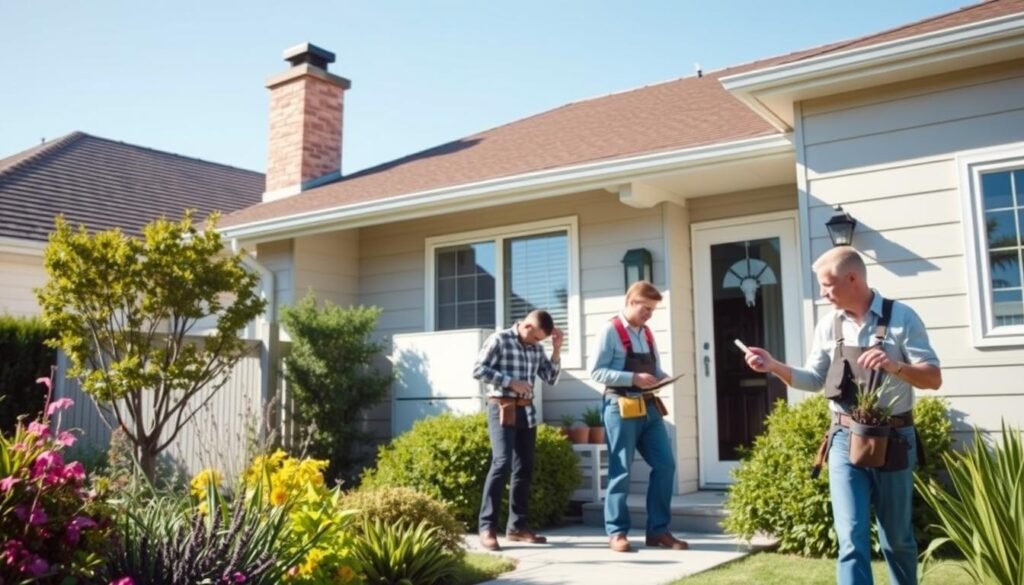
“Investing in preventive maintenance is one of the best ways to protect the long-term value of your rental property and minimize unexpected costs.” – Jane Doe, Rental Property Expert
Choosing Quality Materials and Appliances
When managing rental properties, landlords often face the dilemma of balancing initial costs with long-term benefits. One crucial aspect of minimizing expenses for landlords and implementing smart property management strategies is the selection of quality materials and appliances.
Cost vs. Quality: Making the Right Choice
The temptation to opt for the cheapest options can be strong, but it’s essential to consider the bigger picture. While quality materials and appliances may have a higher upfront cost, they often prove to be a more cost-effective investment in the long run. High-quality items are less likely to require frequent repairs or replacements, ultimately saving landlords money and minimizing maintenance hassles.
Energy-Efficient Appliances and Long-Term Savings
- Investing in energy-efficient appliances can lead to significant long-term savings on utility bills, making them a wise choice for landlords.
- These appliances may have a higher initial price tag, but they often pay for themselves over time through reduced energy consumption and lower operating costs.
- By incorporating energy-efficient features, landlords can not only save money but also contribute to environmental sustainability, appealing to environmentally-conscious tenants.
Striking the right balance between cost and quality is a crucial element of smart property management strategies. By carefully selecting high-quality materials and energy-efficient appliances, landlords can minimize expenses, enhance the long-term value of their properties, and provide a better living experience for their tenants.

“The bitterness of poor quality remains long after the sweetness of low price is forgotten.”
Leveraging Technology for Maintenance Management
In the digital age, smart property management strategies increasingly rely on technology to streamline rental property maintenance. From robust property management software to innovative smart home systems, landlords and property managers can leverage a range of tools to optimize their maintenance workflows and reduce associated costs.
Property Management Software Features
Property management software offers a comprehensive suite of features that can significantly improve maintenance efficiency. These platforms often include functionalities such as automated work order management, preventive maintenance scheduling, inventory tracking, and real-time reporting. By centralizing maintenance data and automating routine tasks, property managers can stay on top of issues before they escalate, ultimately reducing repair expenses and extending the lifespan of rental property assets.
Smart Home Technology to Monitor Systems
The integration of smart home technology in rental properties is another valuable tool for rental property maintenance. Internet-connected sensors and devices can monitor critical systems, such as HVAC, plumbing, and electrical, providing real-time alerts to property managers about potential problems. This proactive approach allows for prompt intervention, preventing minor issues from turning into costly repairs. Additionally, smart home technology can enable remote diagnostics and troubleshooting, reducing the need for on-site visits by maintenance professionals.
By leveraging the power of technology, landlords and property managers can implement smart property management strategies that streamline rental property maintenance tips, ultimately enhancing the overall efficiency and cost-effectiveness of their operations.

| Property Management Software Features | Benefits of Smart Home Technology |
|---|---|
|
|
“Leveraging technology is essential for modern property management strategies that prioritize cost-effective, efficient maintenance practices.”
Building Strong Relationships with Contractors
Maintaining a rental property can be a daunting task, but building strong relationships with reliable contractors can make all the difference. By carefully selecting and communicating with these professionals, you can ensure cost-effective rental upkeep and timely, high-quality DIY rental property repairs.
Selecting Reliable Maintenance Professionals
When it comes to maintaining your rental property, choosing the right contractors is crucial. Look for professionals with a proven track record of delivering quality work and excellent customer service. Conduct thorough research, read reviews, and ask for referrals to find contractors who are knowledgeable, responsive, and committed to your property’s well-being.
Establishing Clear Communication Channels
Regular and open communication with your contractors is the key to a successful partnership. Establish clear expectations, schedules, and communication protocols from the outset. Provide detailed work orders, discuss any concerns or special instructions, and be available to address questions or issues that may arise during the repair or maintenance process. By fostering a collaborative relationship, you can ensure that all tasks are completed efficiently and to your satisfaction.
“Building strong relationships with reliable contractors is essential for maintaining a cost-effective and well-functioning rental property. The investment of time and effort in this area will pay dividends in the long run.”
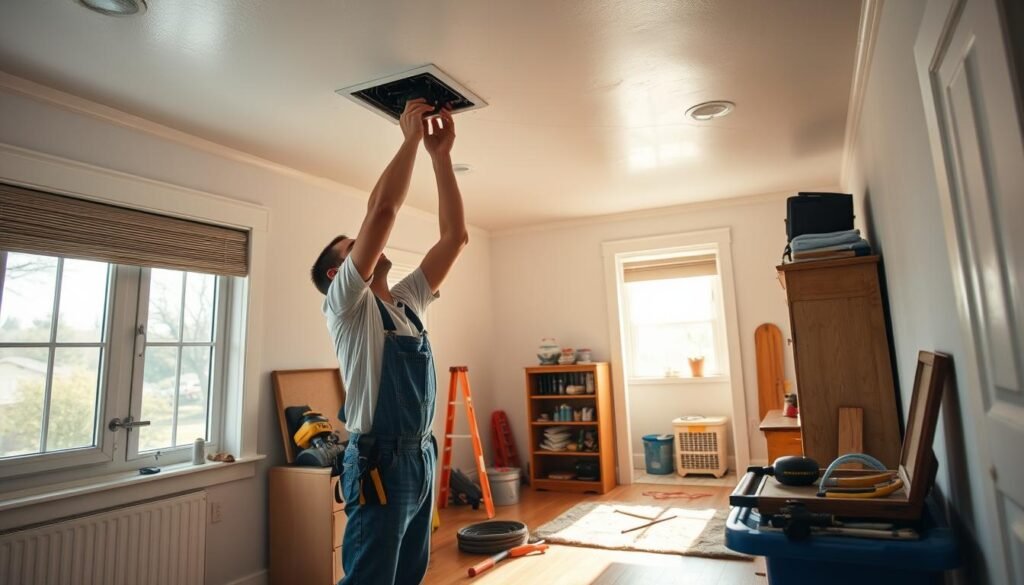
Remember, the success of your rental property operations relies heavily on the quality and responsiveness of the contractors you work with. By taking the time to select the right professionals and establish clear communication channels, you can streamline the maintenance process, reduce costs, and keep your rental property in top condition.
Offering Tenant Incentives for Property Care
Maintaining a rental property can be a significant expense for landlords. However, by offering tenant incentives for proper property care, landlords can potentially save on long-term maintenance costs. This approach not only encourages responsible tenant behavior but also fosters a positive landlord-tenant relationship, ultimately leading to a well-maintained and cost-effective rental property.
Potential Cost Savings for Good Tenant Behavior
When tenants take good care of the rental property, it can translate into substantial cost savings for landlords. Regular cleaning, proper use of appliances, and timely reporting of maintenance issues can all contribute to a reduction in repair and replacement expenses. Additionally, tenants who are invested in the property’s upkeep are less likely to cause damage that would require costly repairs.
Examples of Incentives that Work
- Rent Discounts: Offering a small rent discount to tenants who maintain the property in excellent condition can be an effective incentive. This could include keeping the unit clean, reporting issues promptly, and avoiding damage.
- Security Deposit Refunds: Returning a portion or the entire security deposit to tenants who demonstrate exceptional property care can motivate them to take pride in their rental and treat it as their own.
- Referral Bonuses: Providing a bonus for tenants who refer new tenants who also prove to be responsible and caring for the property can help landlords find and retain reliable tenants.
- Reward Programs: Establishing a rewards program that recognizes and celebrates tenants who go above and beyond in maintaining the rental property can foster a sense of community and encourage others to follow suit.
By implementing a strategic tenant incentive program, landlords can effectively minimize expenses related to rental property maintenance and ensure the long-term preservation of their investment. This approach not only benefits the landlord but also creates a positive living experience for responsible tenants.
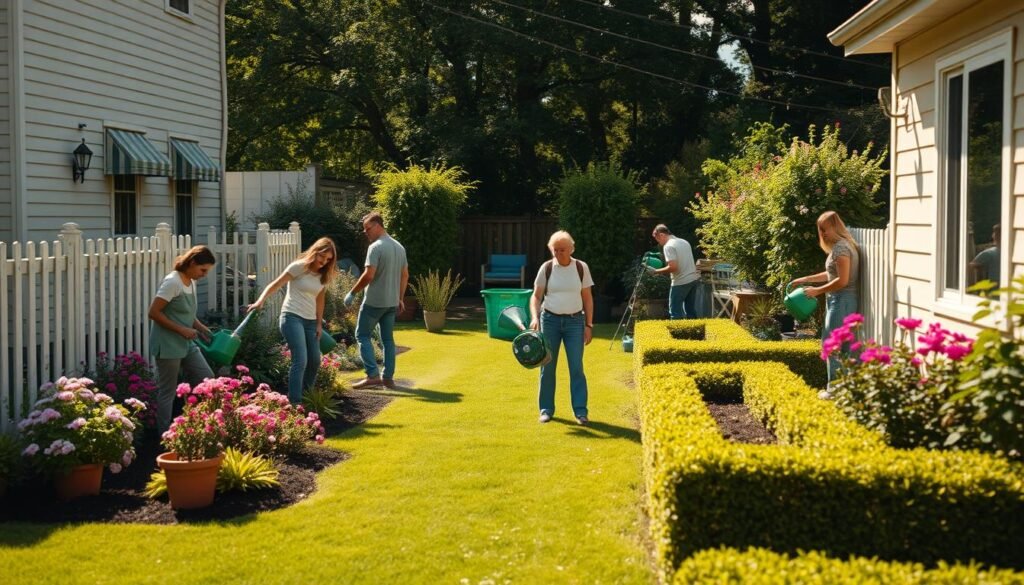
Understanding Local Regulations and Codes
As a savvy property manager, it’s essential to stay up-to-date with the latest local regulations and building codes that govern your rental properties. Compliance with these standards is not only a legal requirement but can also help you avoid costly fines and maintain the integrity of your investments.
Importance of Compliance to Avoid Fines
Neglecting to adhere to local regulations can have serious financial consequences. Rental property maintenance tips often emphasize the need to ensure your properties are up to code, as non-compliance can result in hefty fines and penalties that can quickly eat into your profits. By prioritizing smart property management strategies, you can protect your investment and maintain a positive reputation with authorities and tenants alike.
Regular Training for Maintenance Personnel
- Ensure your maintenance staff is well-versed in the latest local regulations and building codes.
- Provide regular training sessions to keep them informed of any changes or updates to the rules.
- Empower your team to identify potential compliance issues and proactively address them before they become problems.
By investing in the ongoing education of your maintenance personnel, you can cultivate a culture of compliance within your organization, ultimately safeguarding your rental properties and maximizing your long-term profitability.
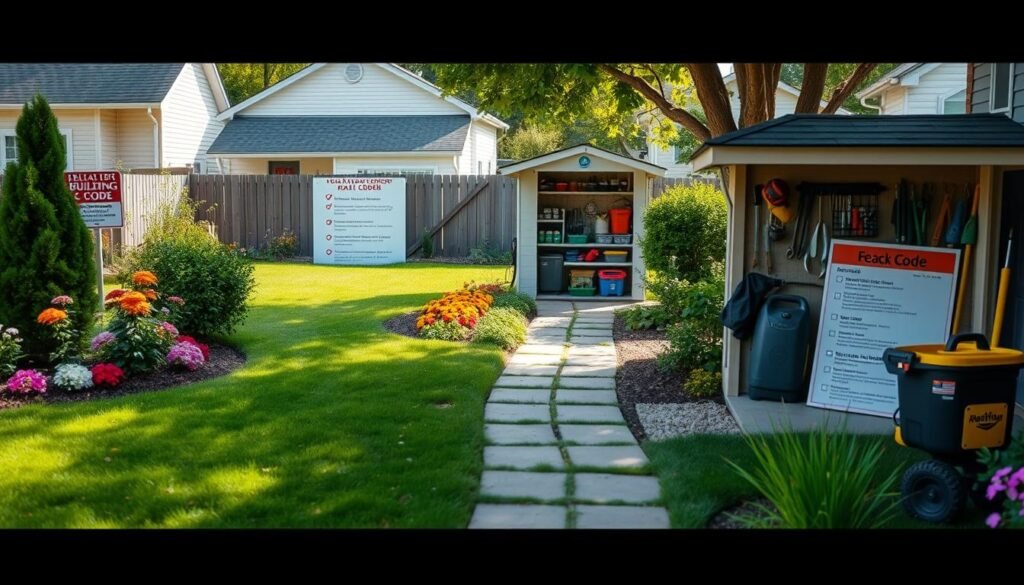
“Staying compliant with local regulations is not only the right thing to do, but it also protects your bottom line in the long run. It’s a win-win for both your business and your tenants.”
Remember, smart property management strategies include a proactive approach to understanding and adhering to local codes and regulations. By doing so, you can effectively mitigate risks, maintain the quality of your rental properties, and ensure a positive experience for both you and your tenants.
Keeping Detailed Records of Maintenance Activities
Maintaining comprehensive records of maintenance activities is crucial for effective cost-effective rental upkeep and smart property management strategies. By documenting every repair, replacement, and service performed on a rental property, property owners and managers can gain valuable insights into their maintenance expenses, identify areas for improvement, and make informed decisions to optimize their overall maintenance budget.
Benefits of Documentation for Cost Tracking
Detailed maintenance records provide a clear paper trail that can be used to track and analyze the costs associated with property upkeep. This documentation can help property owners and managers identify trends, spot potential issues, and make more accurate budget projections. Additionally, well-organized records can be invaluable when filing insurance claims or responding to tenant inquiries about past repairs.
Tools for Efficient Record-Keeping
- Property management software: These platforms often include features for logging and storing maintenance records, allowing for easy access and reporting.
- Spreadsheets: Simple yet effective, spreadsheet software like Microsoft Excel or Google Sheets can be used to create custom maintenance logs and track expenses.
- Dedicated maintenance management apps: Specialized apps designed for property management can streamline the record-keeping process, providing features like work order tracking and automated reminders.
| Record-Keeping Tool | Key Benefits |
|---|---|
| Property management software | Centralized maintenance records, automated reminders, detailed reporting |
| Spreadsheets | Flexible, customizable, easy to use for basic record-keeping |
| Maintenance management apps | Streamlined workflow, advanced features like work order tracking |
By implementing a comprehensive record-keeping system, property owners and managers can gain valuable insights to support their cost-effective rental upkeep and smart property management strategies, ultimately improving the long-term profitability and sustainability of their rental properties.

Training Tenants on Property Care
Maintaining a rental property is a shared responsibility between landlords and tenants. By training tenants on proper property care, landlords can not only minimize expenses but also ensure the long-term preservation of their rental assets. This section explores effective strategies for providing guidelines and encouraging tenant engagement in maintaining the rental property.
Providing Guidelines for Maintenance Responsibilities
Clearly defining tenant maintenance responsibilities is crucial for setting expectations and ensuring shared accountability. Landlords should create a comprehensive guide outlining the responsibilities of tenants, such as:
- Regularly cleaning and maintaining the interior of the rental unit
- Reporting any maintenance issues or damages in a timely manner
- Properly using and maintaining appliances, fixtures, and other rental property components
- Adhering to local regulations and building codes
Encouraging Tenant Engagement in Property Care
Beyond providing guidelines, landlords should actively engage tenants in the property care process. This can be achieved through various methods, such as:
- Offering tenant incentives for maintaining the property in good condition, such as rent discounts or rewards
- Hosting regular property maintenance workshops to educate tenants on best practices
- Encouraging tenants to participate in routine inspections and provide feedback on the property’s condition
- Fostering open communication and responsiveness to tenant concerns or suggestions
By training tenants and promoting their active involvement in property care, landlords can effectively minimize expenses and maintain the long-term value of their rental properties. This collaborative approach not only benefits the landlord but also creates a more positive and well-maintained living environment for the tenants.
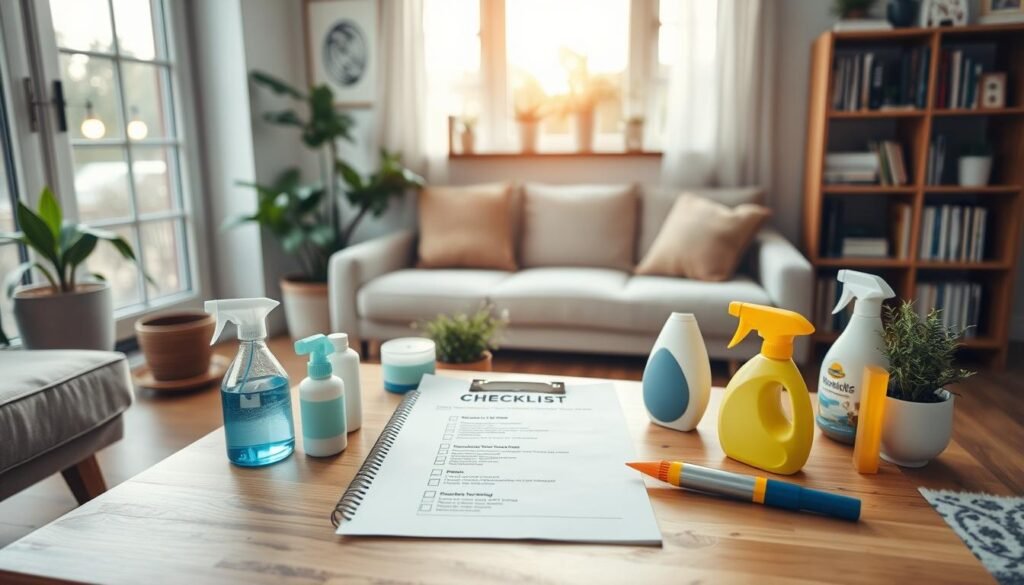
“Engaged tenants are more likely to take pride in their living space and treat the property with care, ultimately reducing maintenance costs for the landlord.”
Targeting Energy Efficiency Improvements
As part of a comprehensive smart property management strategies, homeowners and property managers should prioritize energy efficiency upgrades to their rental properties. These improvements not only lower utility bills, but also contribute to cost-effective rental upkeep in the long run.
Upgrades that Lower Utility Bills
Some of the most impactful upgrades for improving energy efficiency include:
- Installing energy-efficient windows and doors
- Upgrading to high-efficiency appliances
- Adding insulation to walls, attics, and crawl spaces
- Replacing old HVAC systems with more efficient models
- Incorporating smart thermostat technology
These upgrades can significantly reduce energy consumption and lower monthly utility costs, contributing to a more cost-effective rental upkeep over time.
Energy Audits: When and How to Conduct Them
To identify the most pressing areas for energy efficiency improvements, it’s recommended to conduct regular energy audits. These audits can be performed by professional service providers or through DIY assessments using specialized tools.
The best time to conduct an energy audit is when a new tenant moves in or when there is a significant change in the property’s energy usage. By identifying areas of energy waste, property owners can prioritize upgrades and implement smart property management strategies to maximize energy savings.
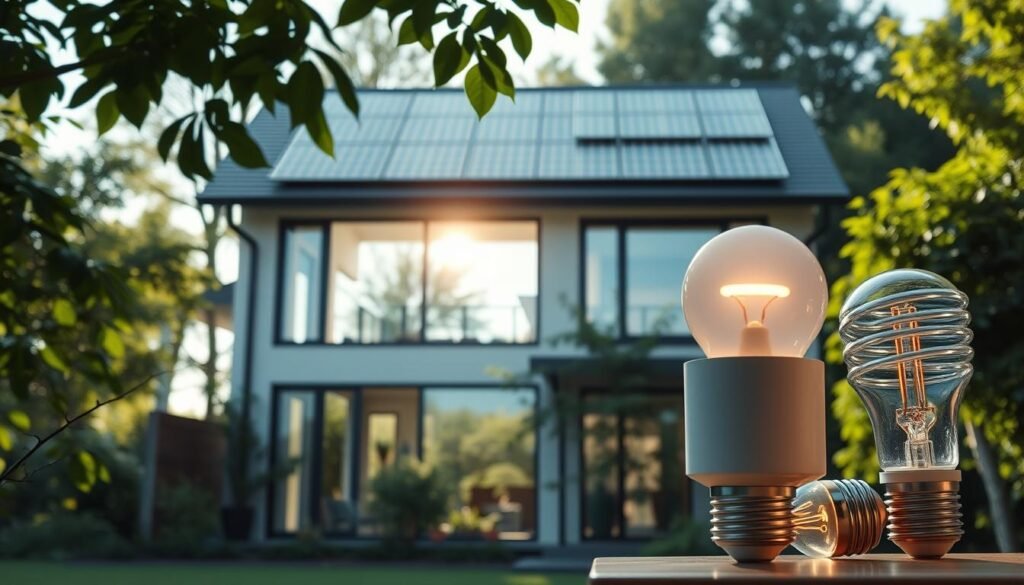
“Investing in energy-efficient upgrades is one of the most effective ways to reduce long-term maintenance costs and create a more sustainable rental property.”
By embracing energy efficiency improvements and conducting regular audits, property owners can unlock the benefits of cost-effective rental upkeep and contribute to a more sustainable future for their rental properties.
Budgeting for Seasonal Maintenance Needs
Maintaining a rental property is an ongoing process that requires careful planning and budgeting, especially when it comes to seasonal maintenance. Properly preparing for winter and summer maintenance can help rental property owners avoid unexpected costs and ensure their properties remain in top condition throughout the year.
Preparing for Winter and Summer Maintenance
As the seasons change, so do the maintenance needs of a rental property. During the winter, property owners should focus on tasks like inspecting and servicing the heating system, insulating pipes, and clearing snow and ice from walkways. In the summer, attention should shift to tasks like checking the air conditioning system, cleaning gutters, and performing any necessary landscaping work.
By anticipating these seasonal maintenance requirements, rental property owners can budget more effectively and avoid costly emergency repairs. Preventative maintenance for rentals is key to keeping maintenance costs under control and ensuring the long-term viability of the investment.
Creating an Annual Maintenance Budget
- Assess historical maintenance costs: Review past maintenance expenses to get a sense of the typical annual costs for the property.
- Identify seasonal maintenance needs: Make a list of all the tasks required for winter and summer maintenance, and estimate the associated costs.
- Factor in unexpected expenses: Set aside a portion of the budget for unanticipated maintenance issues that may arise throughout the year.
- Monitor and adjust the budget: Regularly review the maintenance budget and make adjustments as needed to ensure it remains accurate and realistic.
By budgeting for rental property maintenance in a strategic and proactive manner, rental property owners can better manage their overall costs, protect the value of their investment, and provide tenants with a well-maintained living environment.
| Seasonal Maintenance Task | Estimated Cost |
|---|---|
| Winter Furnace Inspection and Tune-up | $150 |
| Insulating Pipes | $75 |
| Snow and Ice Removal | $300 |
| Summer AC Inspection and Maintenance | $200 |
| Gutter Cleaning | $100 |
| Landscaping and Yard Work | $400 |
By anticipating and budgeting for these seasonal maintenance needs, rental property owners can ensure their properties are well-maintained and avoid unexpected costs throughout the year.

Assessing and Adjusting Rents for Maintenance Coverage
As a landlord, it’s crucial to strike a balance between maintaining your rental property and keeping rents competitive. Assessing and adjusting rents to adequately cover the costs of necessary maintenance is a delicate process that requires careful consideration of multiple factors.
Balancing Rent Increases with Maintenance Needs
When determining rent, you must factor in the ongoing maintenance expenses required to keep your property in optimal condition. This includes the cost of regular inspections, preventive maintenance tasks, and addressing any issues that arise. By adjusting rents to account for these maintenance costs, you can ensure that you have the resources to maintain your property and provide a comfortable living environment for your tenants.
However, it’s equally important to consider the impact of rent increases on your tenants. Striking the right balance between covering maintenance expenses and keeping rents affordable is crucial for minimizing expenses for landlords and maintaining a positive relationship with your tenants.
Market Research for Competitive Pricing
To ensure that your rents are both profitable and competitive, it’s essential to conduct thorough market research. Analyze rental prices in your local area for similar properties, taking into account factors such as location, size, and amenities. This information will help you determine the appropriate rent range that allows you to cover maintenance costs while remaining attractive to prospective tenants.
By leveraging smart property management strategies and conducting regular assessments of your rental pricing, you can effectively minimize expenses for landlords while providing well-maintained, desirable rental properties for your tenants.
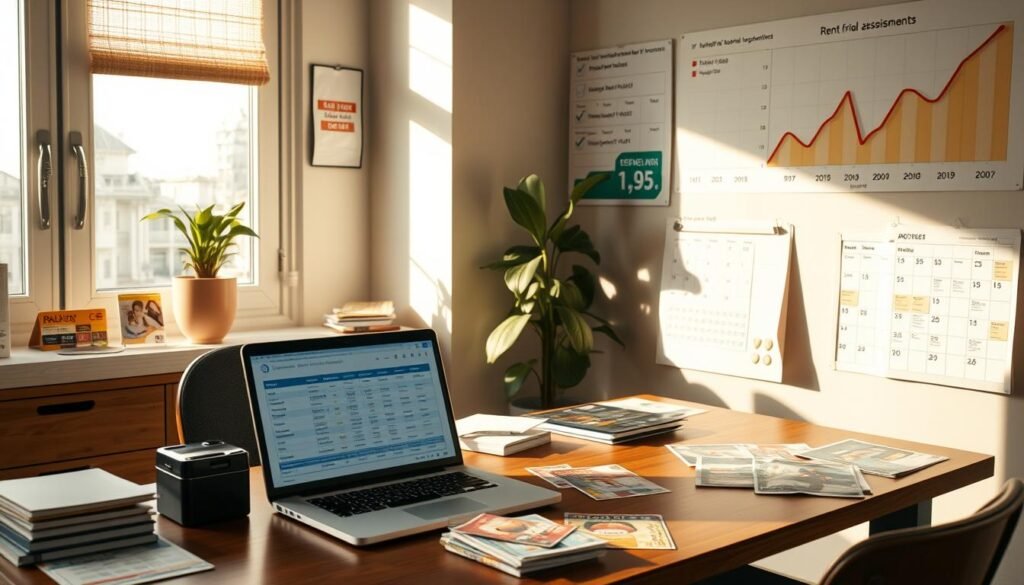
“Striking the right balance between covering maintenance expenses and keeping rents affordable is crucial for minimizing expenses for landlords and maintaining a positive relationship with your tenants.”
Continuously Evaluating Maintenance Strategies
Effective property maintenance is an ongoing process that requires continuous evaluation and refinement. By regularly assessing the performance of your maintenance strategies, you can identify areas for improvement and ensure that your rental property remains well-maintained and cost-efficient.
Metrics to Measure Maintenance Effectiveness
To gauge the success of your maintenance efforts, it’s essential to track key performance indicators (KPIs) such as the frequency of repairs, the cost of maintenance per unit, and the average time it takes to address tenant requests. These metrics can help you identify patterns, detect potential issues, and make data-driven decisions to optimize your maintenance approach.
Adapting to Tenant Feedback for Improvement
Tenant feedback is a valuable resource for refining your rental property maintenance strategies. By actively soliciting and addressing tenant concerns, you can gain valuable insights into areas that require attention and tailor your maintenance plan to better meet the needs of your tenants. This not only improves the overall tenant experience but also helps to reduce long-term maintenance costs by addressing issues proactively.
FAQ
What are the key preventive maintenance tasks for rental properties?
The key preventive maintenance tasks for rental properties include regularly inspecting and servicing HVAC systems, plumbing, electrical systems, roofing, and exterior components. Preventive maintenance also involves addressing minor issues before they escalate into costly repairs.
How can I leverage technology to improve maintenance management?
You can leverage technology by using property management software with features like work order tracking, vendor management, and maintenance scheduling. Additionally, investing in smart home technology can help monitor property systems and identify issues early on.
How can I build strong relationships with maintenance contractors?
To build strong relationships with maintenance contractors, select reliable professionals, establish clear communication channels, and provide timely payment. Developing long-term partnerships can lead to better pricing, prioritized service, and more efficient repairs.
What are some effective tenant incentives for property care?
Effective tenant incentives for property care can include rent discounts or credits for timely reporting of maintenance issues, rewards for keeping the property well-maintained, and recognition programs that acknowledge responsible tenant behavior.
How can I train tenants on proper property care?
To train tenants on proper property care, provide clear guidelines outlining their maintenance responsibilities, conduct move-in walkthroughs, and offer educational resources on topics like basic repairs and energy-saving tips. Encouraging tenant engagement can help reduce maintenance costs.
How do I budget for seasonal maintenance needs?
To budget for seasonal maintenance needs, identify the tasks required for winter and summer, such as HVAC servicing, gutter cleaning, and landscaping. Create an annual maintenance budget that accounts for these seasonal expenses, allowing you to prepare and allocate funds accordingly.
How can I assess and adjust rents to cover maintenance costs?
When assessing and adjusting rents, consider the current market rates, the property’s maintenance needs, and the cost of necessary upgrades or repairs. Conduct market research to ensure your rents are competitive while covering the required maintenance expenses.
What metrics should I use to evaluate the effectiveness of my maintenance strategies?
Key metrics to measure the effectiveness of your maintenance strategies include the frequency and cost of repairs, tenant satisfaction levels, property condition assessments, and the ratio of preventive maintenance to reactive repairs. Continuously evaluating these metrics can help you improve your maintenance practices over time.

